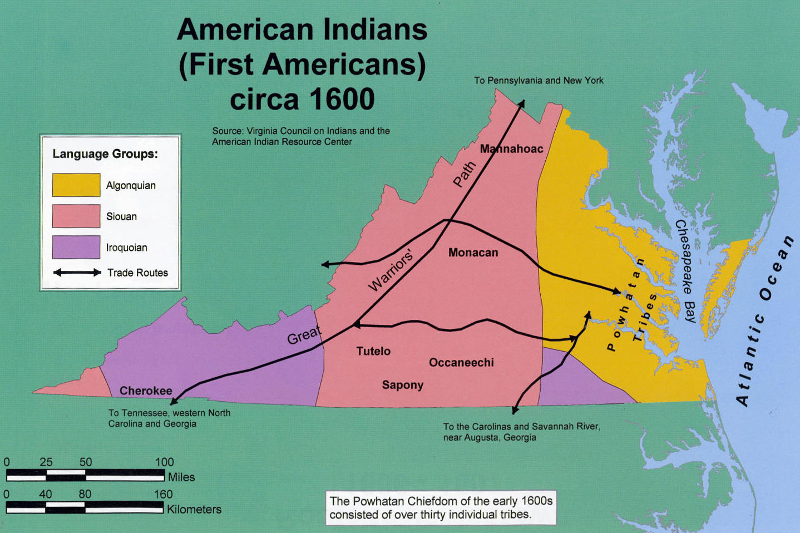
areas dominated by different language groups in 1600
Source: Virginia Geographic Alliance, An Atlas of Virginia (Map 26)

areas dominated by different language groups in 1600
Source: Virginia Geographic Alliance, An Atlas of Virginia (Map 26)
The social and political organization of the Native Americans in Virginia have evolved since the first humans arrived perhaps 15,000 years ago. Anthropologists use primarily archeological evidence to speculate on the settlement patterns and seasonal cycles of hunting and gathering by family groups and bands of different sizes, from the Paleo to the Woodland periods.
The arrival of Spanish and then English settlers provides more information, though the written records reflect the perspective of just the military/colonial officials on one side of the interaction between cultures.
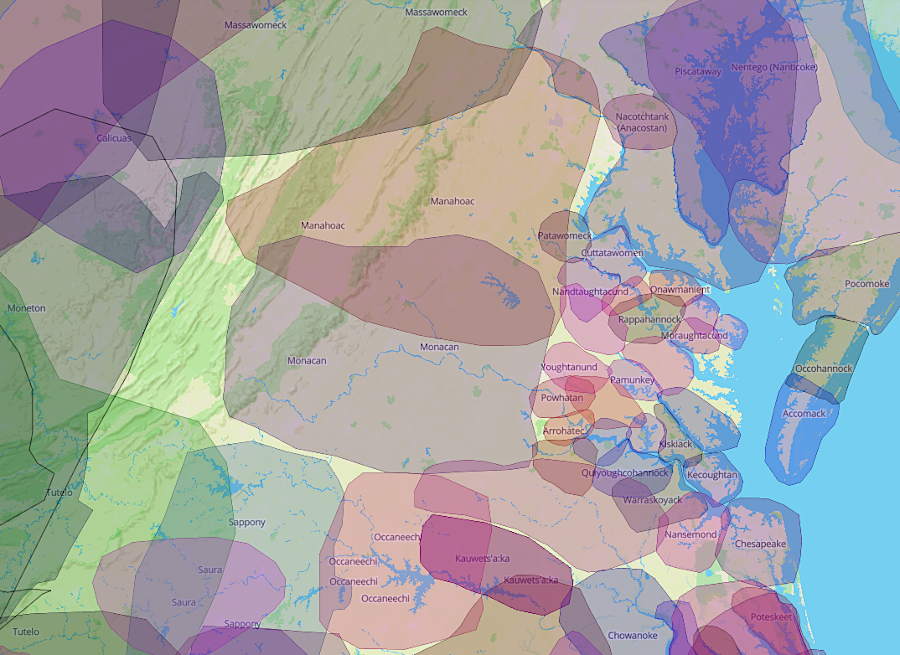
English colonists eventually displaced multiple groups of Native Americans from their territories
Source: Native Land Digital
Warfare is most clearly documented. It is obvious when Native Americans perceived the intrusion of the colonists to be unacceptable or when the colonist seized land through force, and highway markers were erected across Virginia after the 1920's do mark locations of "massacres" and "outrages."
Peaceful negotiations and adjustments are harder to comprehend. Even the basis statistics on Native American population levels prior to contact, and the impact of war and disease on reducing those population levels, involves a wide margin of error. Understanding how Native American societies evolved and adjusted to colonization, outside of hostilities, requires interpretation of conflicting data and intuition, and occasionally speculation beyond clear evidence.
The Virginia colonists engaged with a wide range of Native American groups, known as tribes or nations. Colonists seized control of land along the Chesapeake Bay and its tributary rivers first, and interaction with the tribes in that region were recorded in the greatest detail. Long-distance trading impacted Native American groups who lived in the watersheds of the Roanoke, New, Cape Fear, and Yadkin/PeeDee rivers long before explorers and colonists arrived in person, and how trading/disease transformed communities south of the James River is less well understood.
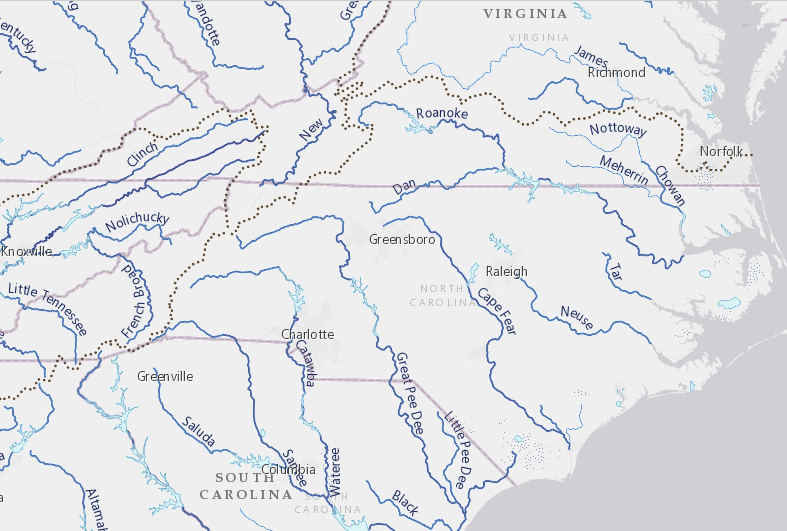
trading south and west of the James River altered Native American communities along the Occaneechi Path from modern-day Petersburg to Charlotte, long before settlers occupied lands in the Roanoke, New, Cape Fear, and Yadkin/PeeDee watersheds
Source: ESRI, ArcGIS Online
Some Native American groups who lived outside the boundaries claimed by Virginia officials, especially the Susquehanna, Iroquois, and Shawnee, had a substantial impact on the "borderlands" as settlers moved west from the Atlantic Ocean. The interaction with Powhatan's paramount chiefdom dominates the history books, especially tales of Pocahontas. However, the competition between the Virginia colonists and tribes outside of Powhatan's control was just as intense.
It took 150 years before Virginia's competition with traders/governments based in Maryland, Pennsylvania, New York, and the Carolinas eliminated the buffers separating the French based on the St. Lawrence River, leading to the French and Indian War in 1754-1763 to resolve control over the Ohio River valley.
Source: Virgnia Department of Education, The Virginia Indians: Meet the Tribes
It took over 30 more years after the 1763 Treaty of Paris before the Native American tribes in the Northwest Territory submitted to American military force with the 1795 Treaty of Greenville. By that time, Virginia had ceded its claims to the lands west of the Ohio River and Kentucky had become a separate state, but the leader of the United States was a Virginian (George Washington) with a long history of using force to establish domination over Native American communities.
After the US Supreme Court authorized "separate but equal" discrimination in the 1896 Plessy v. Ferguson decision and adoption of the 1902 Constitution of Virginia, state officials sought to define all Virginians as either "colored" or "white."
Walter Plecker, the first registrar of Virginia's Bureau of Vital Statistics, used the 1924 Racial Integrity Act to pressure county officials to reclassify Native Americans as "colored" because they had at least one drop on non-white blood. That forced Native Americans in Virginia to move to more-receptive communities such as Washington DC, or to disguise their heritage. Marriage between different races was prohibited until 1969, when the US Supreme Court ruled that Mildred Jeter (with Rappahannock as well as African-American heritage) could legally be married to Richard Loving.
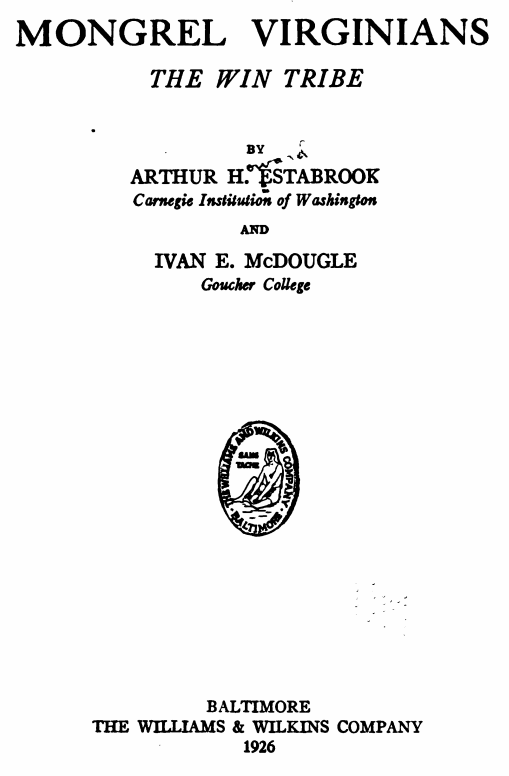
a 1928 book sought to portray the Monacan tribe as "mongrels"
Source: HathiTrust, Mongrel Virginians; the Win tribe
Some Native American groups affected by colonial settlement in Virginia are now tribes officially recognized by Virginia and living within the state's boundaries. One, the Pamunkey, was officially recognized through the Department of the Interior's administrative process in 2015. Six other tribes (the Chickahominy, Eastern Chickahominy, Upper Mattaponi, Rappahannock, Monacan, and Nansemond) were given Federal recognition by Congressional action when it passed the Thomasina E. Jordan Indian Tribes of Virginia Federal Recognition Act in 2018.
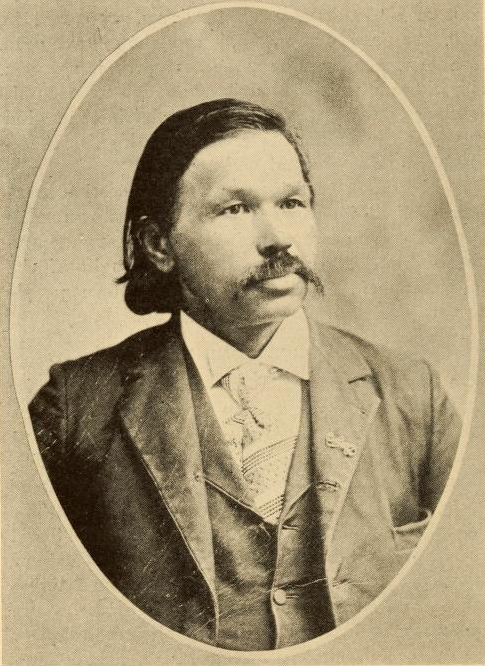
Chief Atkins of the Chickahominy, before he died in 1921
Source: Museum of the American Indian, Chapters on the ethnology of the Powhatan tribes of Virginia (p.269)
Other groups who once impacted colonial settlement in Virginia have reservations in other state and even in Canada. In addition, a variety of unrecognized groups based in Virginia or in surrounding states claim Native American heritage dating back to colonial and pre-colonial times.
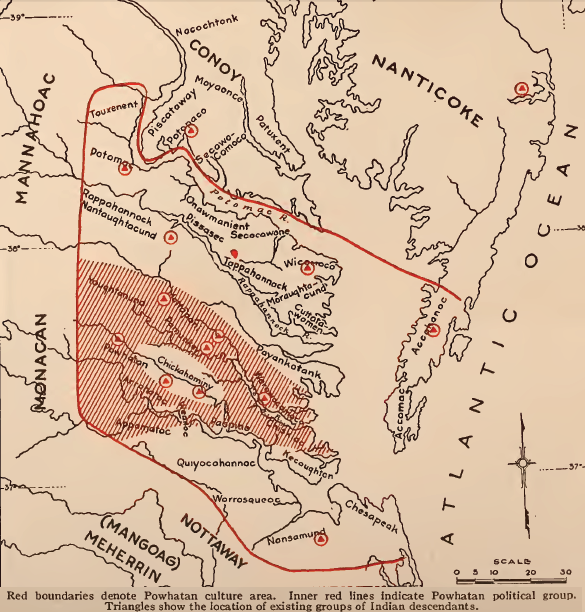
ethnologists such as Frank Speck studied Native American societies in the early 1900's, spurring groups to incorporate and establish a public identity as tribes
Source: Frank Speck, Chapters on the Ethnology of the Powhatan Tribes of Virginia (1928)
The most-distant object in the universe ever visited by a spacecraft is named "Arrokoth," after the Pamunkey word for "sky." When the New Horizons spacecraft first examined the icy body in the Kuiper belt, after passing Pluto, astronomers called it "Ultima Thule." That referred to a mythical land that existed past the borders of the known world. After discovering the name had also become a common term among white supremacy groups for the ancestral home of "Aryan" people, astronomers adopted Arrokoth as the object's final name.
Reports on the name change sometimes muddled the distinction between territory controlled by Algonquian-speaking tribes and territory controlled by the paramount chief Powhatan. The article incorrectly assumed land north of the Potomac River was within Powhatan's paramount chiefdom. When English colonists arrived in the early 1600's, different Algonquian-speaking tribes associated with the Piscataway tayac controlled the area where scientists later were based at Goddard Space Flight Center and the Johns Hopkins Applied Physics Laboratory.
The principal investigator for the New Horizons mission was more poetic, and more accurate, when he said:1
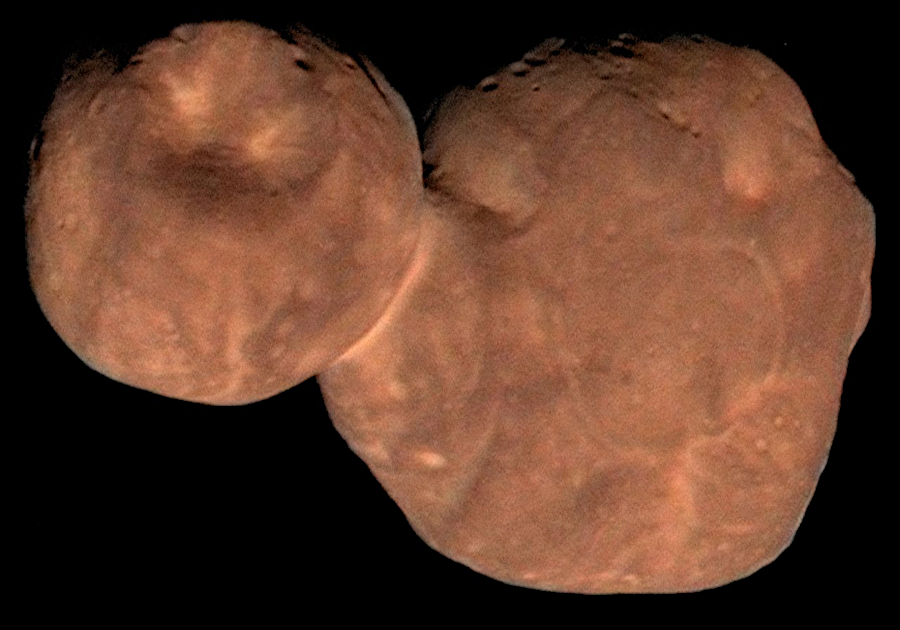
Arrokoth, an icy body in the far-distant Kuiper belt, is named after the Algonquian language word for sky
Source: National Aeronautics and Space Administration (NASA), Aerial Image, Mantle Tribute to Virginia Indians
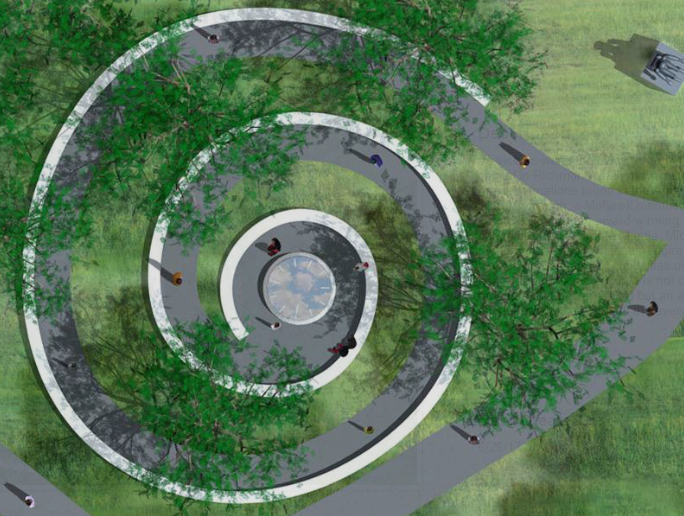
the Mantle monument, now completed on the grounds of the State Capitol, commemorates the Native Americans of Virginia
Source: Virginia Humanities, Virginia Indian Archive, Aerial Image, Mantle Tribute to Virginia Indians
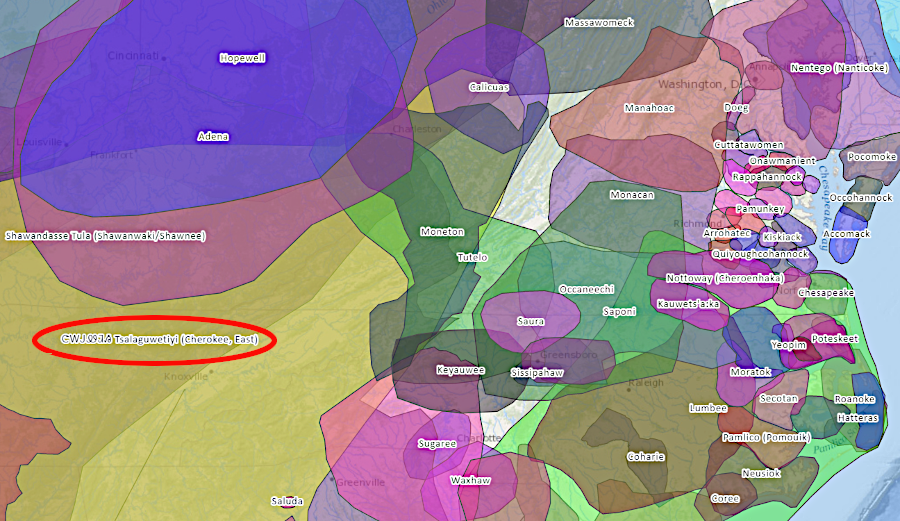
the Iroquian-speaking Cherokee were in southwestern Virginia when English colonists arrived in Virginia
Source: Mid-Atlantic Regional Council on the Ocean, Mid-Atlantic Ocean Data Portal